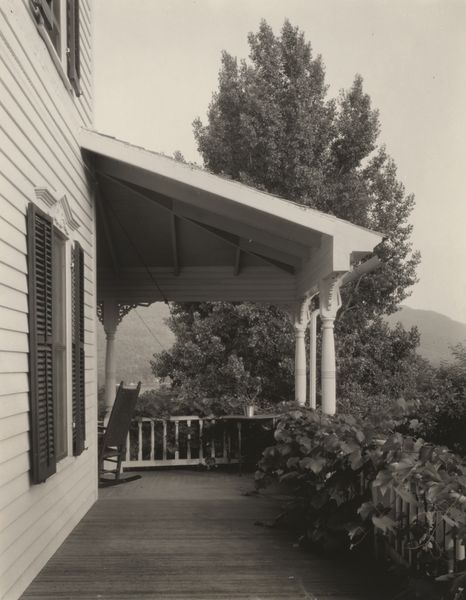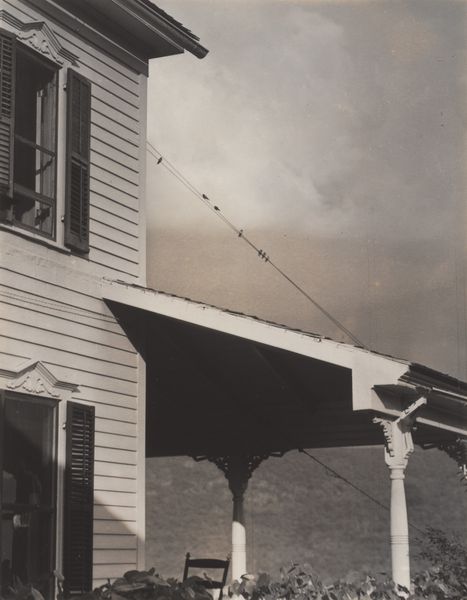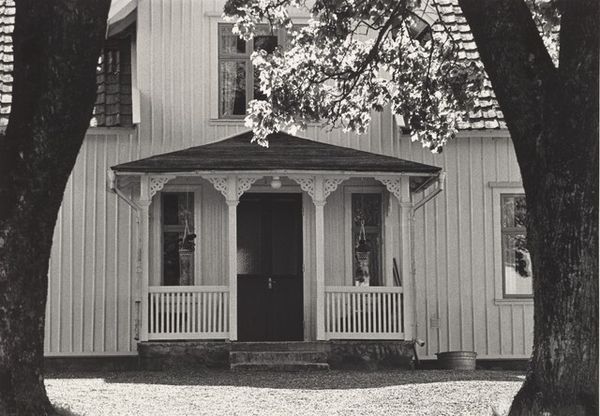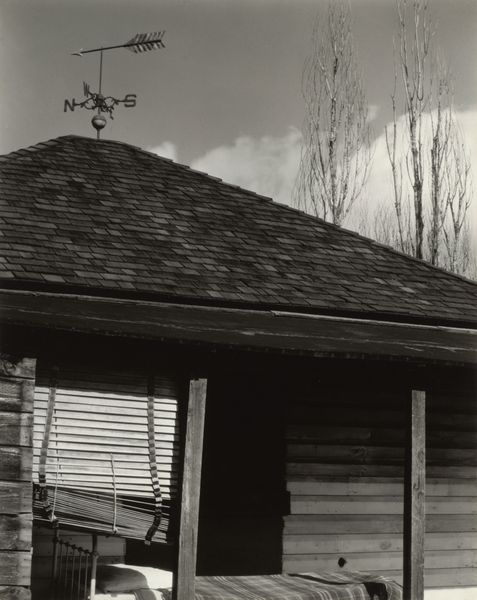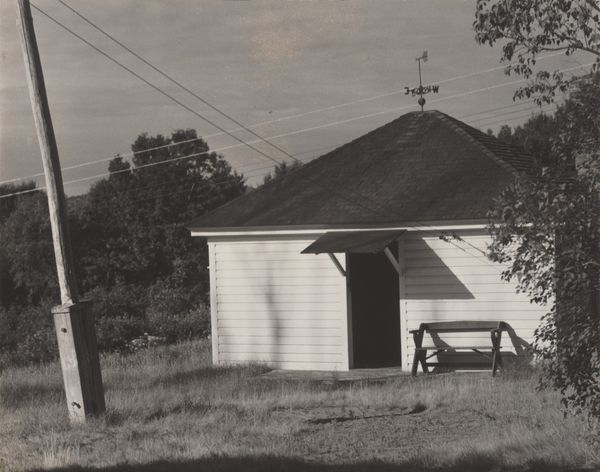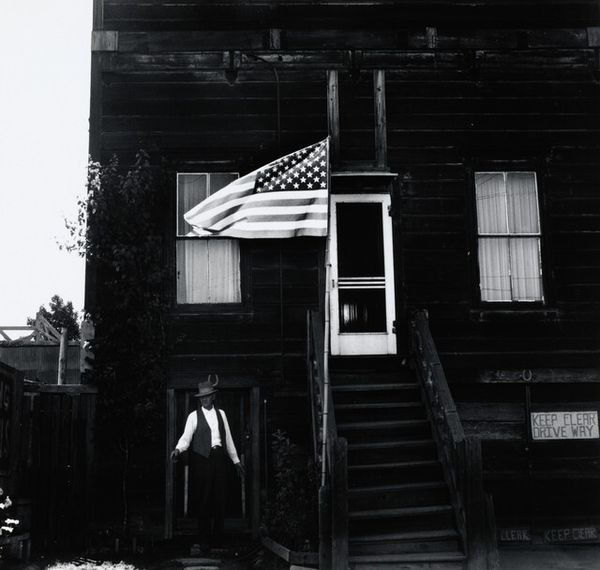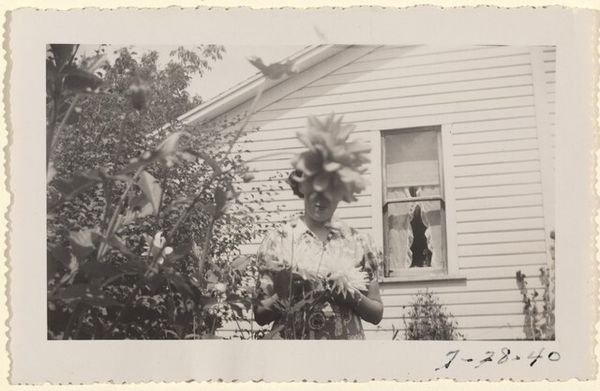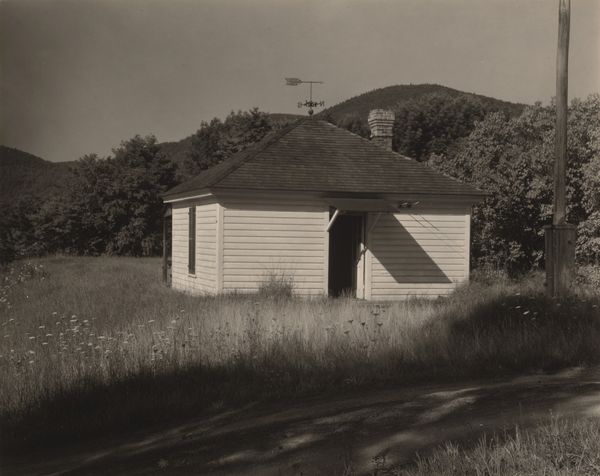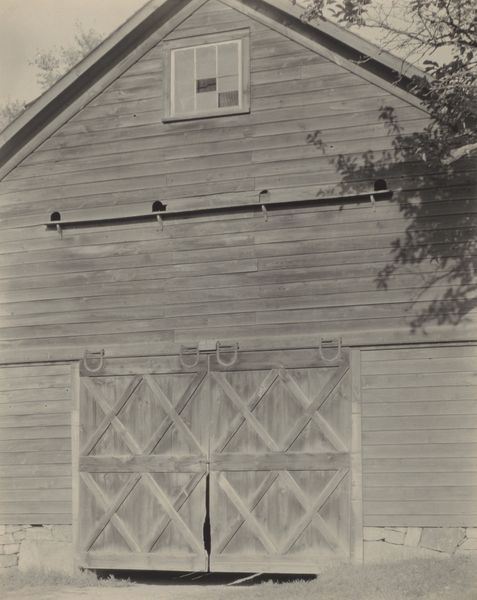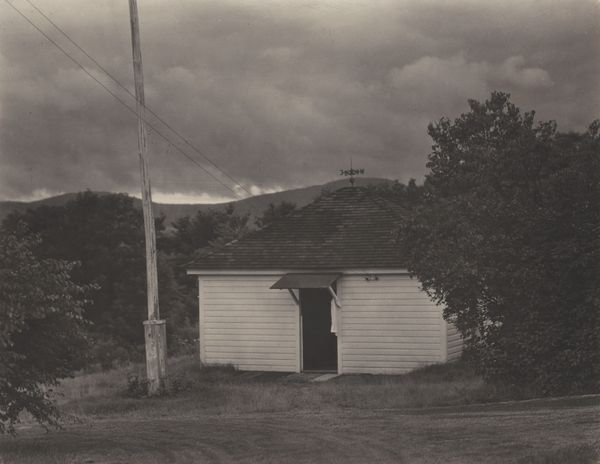
Dimensions: 24.4 × 19.3 cm (image/paper/first mount); 51.5 × 40.6 cm (second mount)
Copyright: Public Domain
Curator: Looking at this photograph, "House and Grape Leaves," it evokes a strange kind of longing. Captured by Alfred Stieglitz in 1934 using the silver print method, it depicts a house consumed by grape vines. What is your first take? Editor: Claustrophobia, honestly. Those vines feel so overgrown, almost aggressively reclaiming the space. I wonder what that house represents to Stieglitz, or even the wider world in the midst of the Great Depression. It's like nature's revenge. Curator: That's a potent interpretation! For me, I'm drawn to the textures – the soft, almost blurry edges of the leaves against the sharp, defined lines of the architecture. There's a contrast there between organic chaos and man-made order, perhaps. It feels incredibly tactile, wouldn't you say? Editor: Absolutely tactile, but also performative, as many of Stieglitz’s landscapes were. Let’s consider the political dimension, too: land ownership, rural poverty... Does this image romanticize or critique the rural experience during that time? Does that abundance of leaves and vines denote something more? Curator: You always bring a crucial critical edge. Perhaps the abundance hints at resilience, survival, but it's a loaded image isn't it? The formal composition leads my imagination down paths of contemplation. I see loneliness, or perhaps, a deliberate withdrawal from a noisy, increasingly industrialized world. It's meditative, in a somber sort of way. The muted tones give it this hazy, dreamlike quality, inviting introspection. Editor: Introspection yes, but let’s think too about *whose* introspection it solicits and centers. The absence of people in the frame encourages us to reflect upon our place and positioning when looking at land. Stieglitz's positioning of himself, too, is telling: who he was, and what access he had. It is hard not to wonder, given Stieglitz's position, what socio-economic context framed this “withdrawal." Curator: So, the image becomes a mirror reflecting back not just landscape, but our own positions as viewers… Hmm, something to keep mulling over for sure. Editor: Indeed. Food for thought long after we move to the next artwork.
Comments
No comments
Be the first to comment and join the conversation on the ultimate creative platform.
